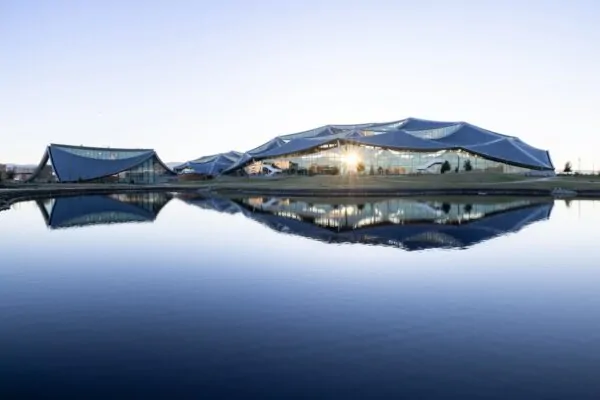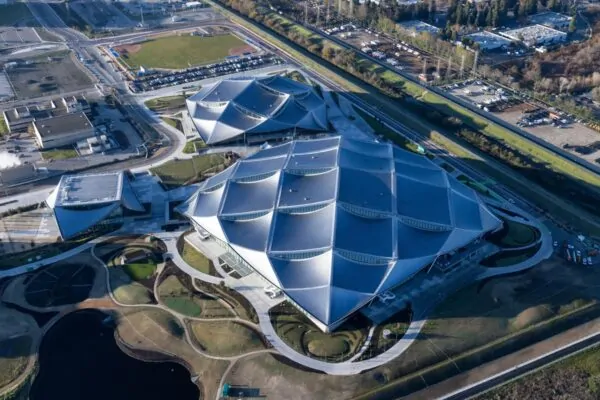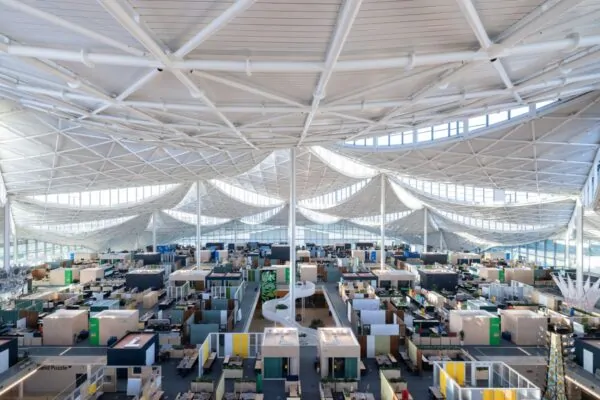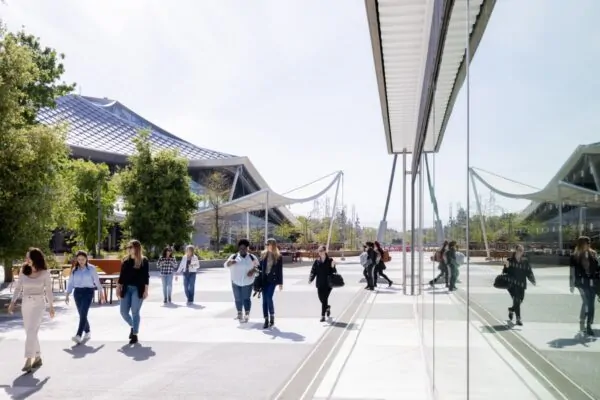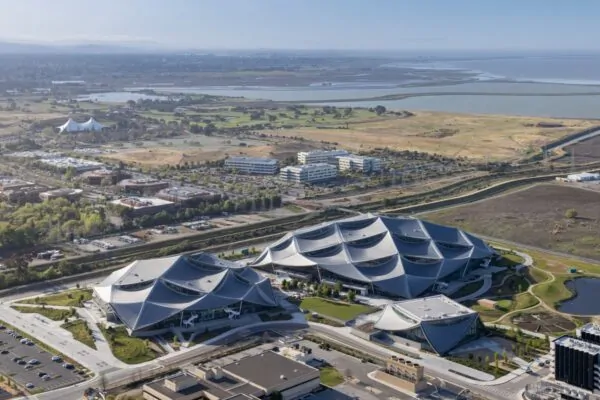Built
2017-2022
Total Energy Generated
7 megawatts
Originally, Google teams envisioned a campus design based on three core values: innovation, nature, community. From the outset, they wanted to use natural materials to ensure the best indoor air quality, biophilic design, sustainable building performance and overall design excellence. Indeed, why couldn’t building technologies that generate renewable energy be efficient AND beautiful?
Challenging structural habits:
This project marked the starting point for Google to create its own buildings. Previously, as with most large companies, the practice was to buy or rent existing buildings and invest a lot of money in transforming them. In traditional offices, there is an unspoken rule, established decades ago, that views and natural light are limited. The Google team wanted to challenge this by prioritising the human experience. So the interior of the building had to offer spaces where employees could easily communicate with their teammates, have access to natural light and views. The project was already part of Google’s green ambition: to be the first major company to run on low-carbon energy 24/7 by 2030.
The Dragonscale solar roof, a great innovation:
To meet the desire for innovation, the teams had to challenge the existing building materials from the outset. Solar panels on roofs had been around for a long time, but as soon as buildings took on unconventional shapes, solar efficiency decreased. In order to let in daylight, the multiple openings in the canopy defined a roof with unconventional shapes. We had to experiment, make prototypes, test them, fail quickly and improve them quickly based on what we had learned. During this exciting phase, there were interesting tensions between aesthetic and technical aspects: the colour of the solar tiles was the subject of lively debate. The colour black was much more efficient in producing solar energy than the white colour initially envisaged by the project designers. A compromise was finally reached, an aesthetic solution that allowed the buildings to be completely covered with silver-grey Dragonscale solar tiles, the layout of which allows solar production 365 days a year. The Dragonscale roof’s rhomboidal arrangement of solar tiles prevents wind, rain and ice from seeping into the gaps. Unlike a flat roof that generates peak energy at the same time every day, the curved shapes of the roof are covered with a kind of solar dragon skin that generates energy for a longer period of the day.
Another innovation we have brought to the Dragonscale roof is a highly textured prismatic glass tile with a unique coating technology. The prismatic quality of the glass traps the light that would normally escape from a traditional flat solar panel. An added benefit of this technology is that it reduces the reflective glare that can be a problem for aircraft pilots.
Developing new building materials:
The 90,000 Dragonscale solar tiles installed on the four buildings will produce 7 megawatts of renewable energy, or about 40% of the campus’ annual energy needs. In addition to being aesthetically pleasing and efficient, all of the innovations on the Bay View campus had to be economically viable after the project. SunStyle’s goal, as well as that of the Google teams, was to develop solutions in this very large-scale environment that could be replicated throughout the building industry. And it looks like it has been successful!
“Obviously, the Dragonscale solar panels were an important feature [of the development]. To me, it’s kind of a statement, just showing that building solar roofs can be aesthetically incredible.” Sundar Pichai – Google & Alphabet CEO
To learn more about this architectural adventure, download the free ebook “Pathways: Unlocking Innovation at Charleston East and Bay View”.
